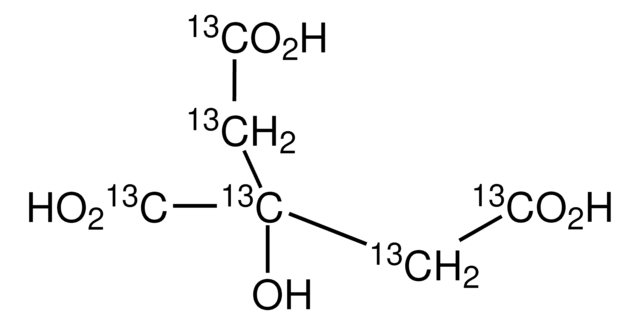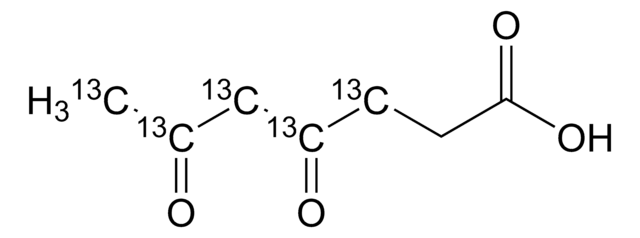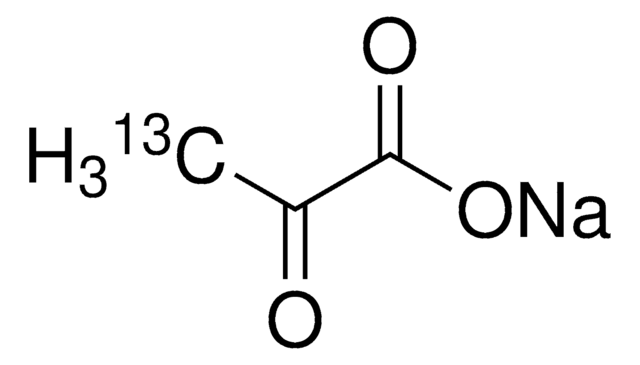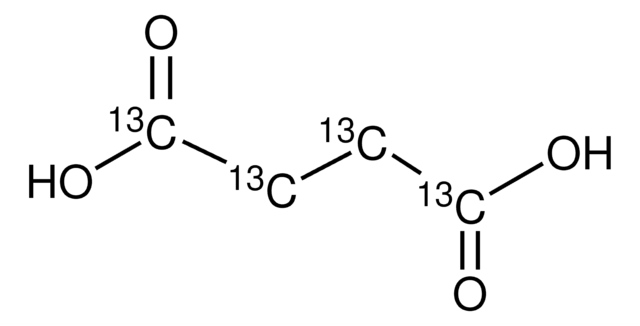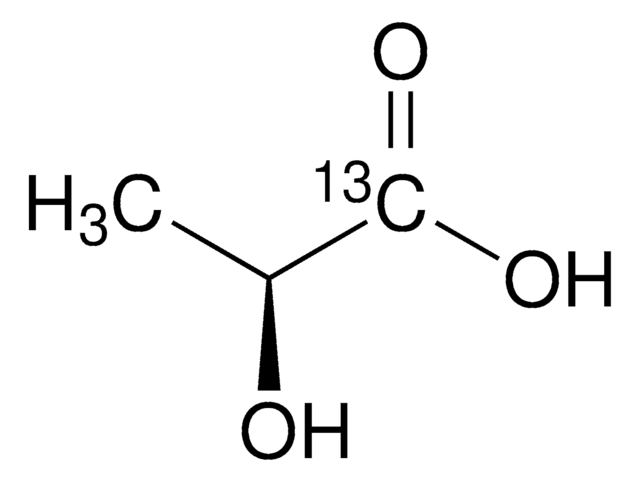677175
Pyruvic-1-13C acid (free acid)
≥99 atom % 13C, ≥99% (CP)
Synonyme(s) :
α-Ketopropionic acid-1-13C, 2-Oxopropionic acid-1-13C, 13C Labeled pyruvic acid, Pyruvic acid-1-13C
About This Item
Produits recommandés
Pureté isotopique
≥99 atom % 13C
Niveau de qualité
Essai
≥99% (CP)
Forme
liquid
pb
165 °C
Pf
11-12 °C
Densité
1.281 g/mL at 25 °C
Changement de masse
M+1
Conditions d'expédition
dry ice
Température de stockage
−20°C
Chaîne SMILES
CC(=O)[13C](O)=O
InChI
1S/C3H4O3/c1-2(4)3(5)6/h1H3,(H,5,6)/i3+1
Clé InChI
LCTONWCANYUPML-LBPDFUHNSA-N
Vous recherchez des produits similaires ? Visite Guide de comparaison des produits
Catégories apparentées
Description générale
Application
Conditionnement
Mention d'avertissement
Danger
Mentions de danger
Classification des risques
Eye Dam. 1 - Skin Corr. 1C
Code de la classe de stockage
8A - Combustible corrosive hazardous materials
Classe de danger pour l'eau (WGK)
WGK 1
Point d'éclair (°F)
179.6 °F - closed cup
Point d'éclair (°C)
82 °C - closed cup
Faites votre choix parmi les versions les plus récentes :
Déjà en possession de ce produit ?
Retrouvez la documentation relative aux produits que vous avez récemment achetés dans la Bibliothèque de documents.
Les clients ont également consulté
Articles
Review the 10 steps of glycolysis in the Embden-Meyerhof-Parnas glycolytic pathway. Easily compare reaction stages and buy the enzymes for your life science research.
Sigma-Aldrich.com presents an article concerning MRI/MRS and the use of isotopes in hyperpolarization.
Dynamic Nuclear Polarization (DNP) is a phenomenon by which high spin polarization, typically derived from a bath of free radical electrons, is transferred to a nuclear spin bath, enhancing the difference between the nuclear energy levels and thereby producing dramatically enhanced NMR signals for detection.
Notre équipe de scientifiques dispose d'une expérience dans tous les secteurs de la recherche, notamment en sciences de la vie, science des matériaux, synthèse chimique, chromatographie, analyse et dans de nombreux autres domaines..
Contacter notre Service technique



